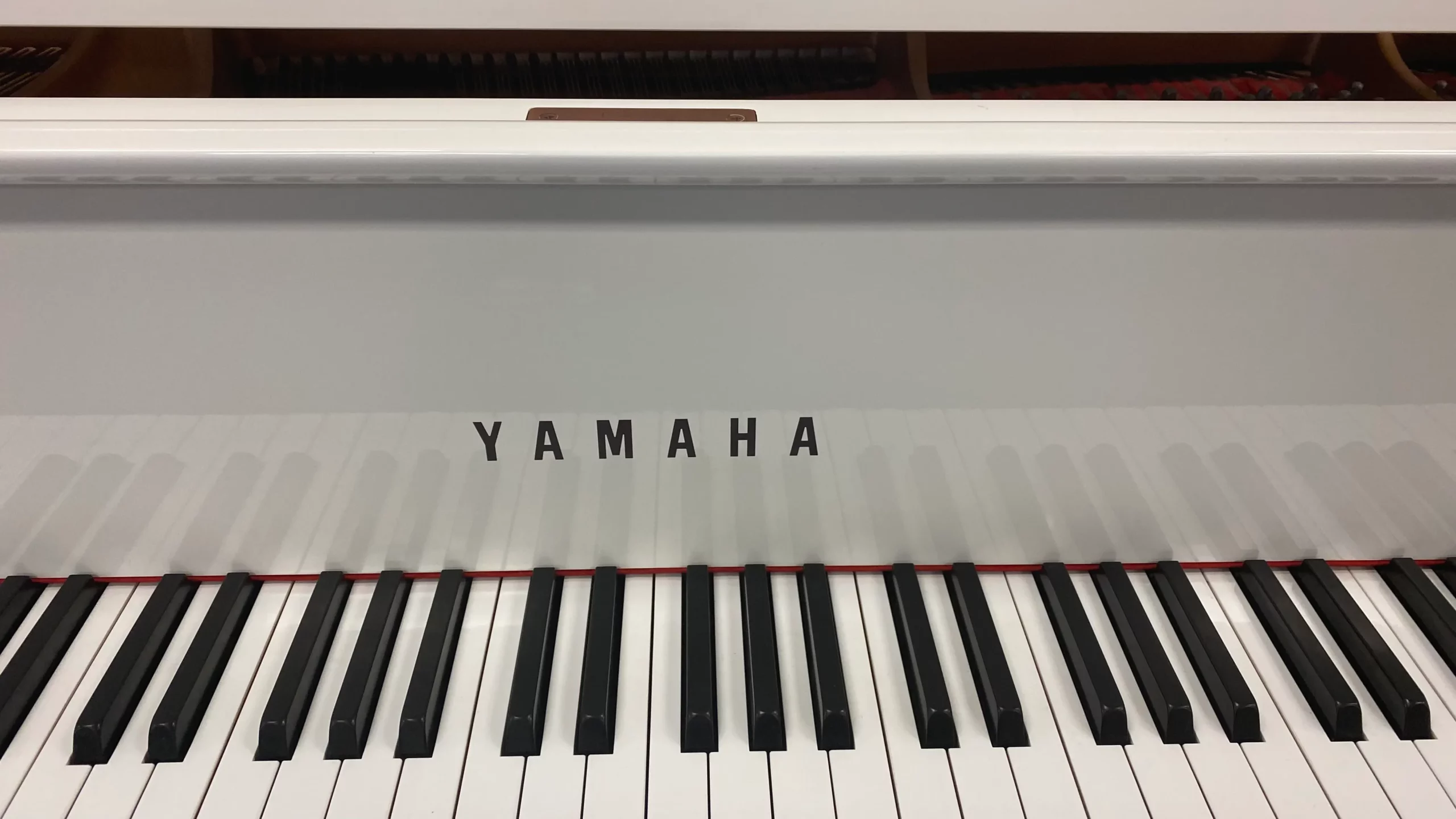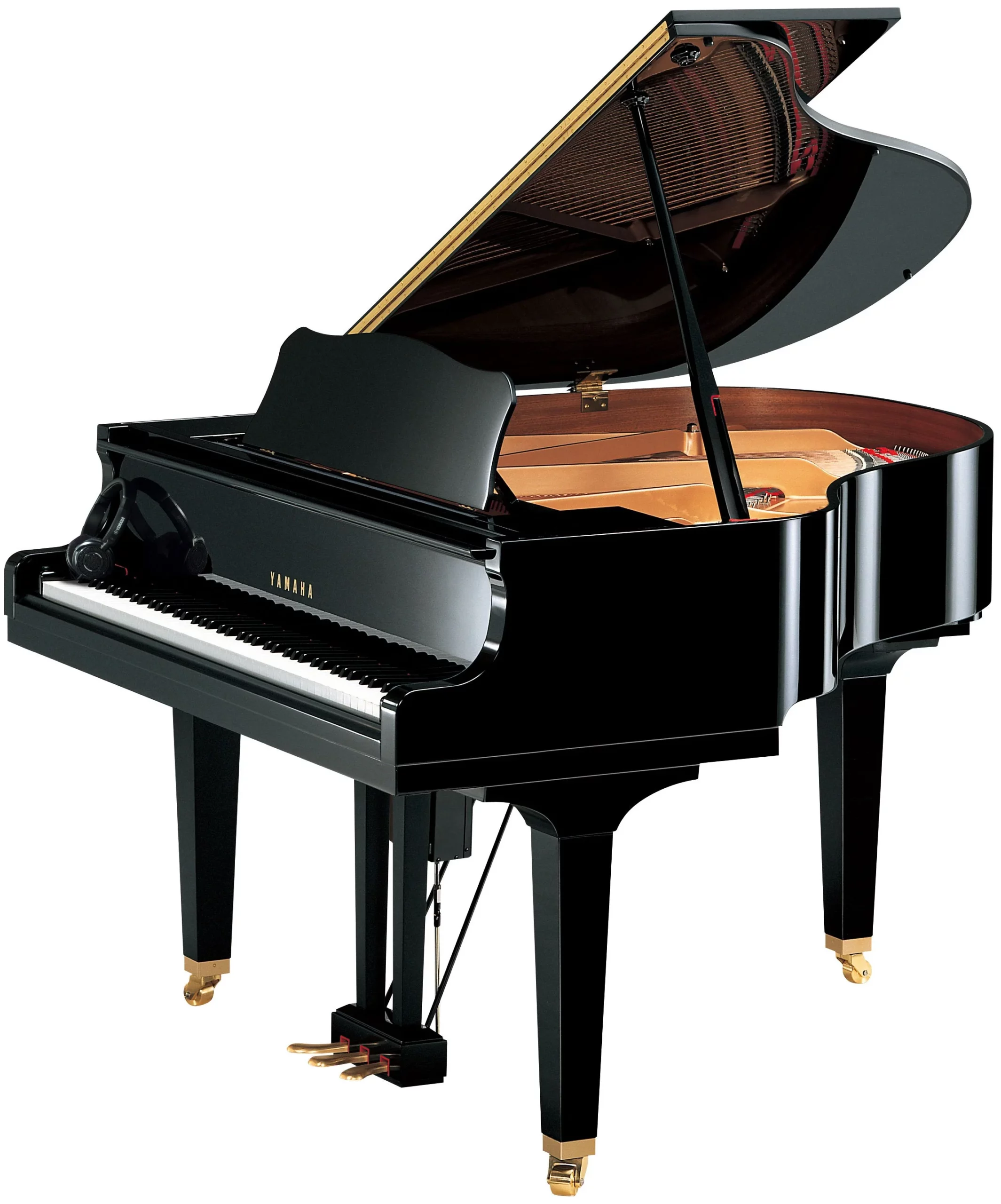Have you ever wondered what piano keys are made of? As a beginner pianist, I was always curious about the materials used to create such a beautiful and essential instrument. And maybe you’re even considering investing in your own piano but want to know more about its construction before making the purchase. Well, look no further because in this article we’ll dive into the surprising materials that make up piano keys.
From traditional ivory to modern-day plastic, we’ll explore how these materials affect the sound and feel of playing the piano. We’ll also discuss why certain materials have been replaced over time and whether it makes a difference in quality or not. So whether you’re a music enthusiast or simply looking for some interesting trivia, keep reading as we uncover the secrets behind piano key production!
So, what are piano keys made of?
Piano keys are typically made of wood, specifically spruce or basswood. These types of wood are chosen for their durability and ability to withstand the constant pressure and movement from playing. However, in modern times, some piano keys may also be made with plastic materials such as acrylic or polystyrene. This is often done for cost-effectiveness and to reduce weight in portable keyboards. Additionally, the white keys on a piano are traditionally coated with ivory or synthetic materials like plastic to create a smooth surface for playing. The black keys, also known as sharps and flats, were historically made of ebony but can now be found in various composite materials as well. Overall, the materials used for piano keys have evolved over time but continue to provide a strong foundation for creating beautiful music on this beloved instrument.
Historical Overview: The Evolution of Piano Key Materials
In the beginning, piano keys were not made of the materials we commonly see today. The piano itself dates back to around 1700 and its early design bore a strong resemblance to harpsichords. In these initial stages, most manufacturers used animal parts, in particular ivory from elephant tusks, which was seen as a sign of luxury and refinement due to its delicate texture and beautiful luster. However, with time it became abundantly clear that this practice was unsustainable and cruelly exploitative.
Fast forward to the 20th century, following growing concerns about animal welfare along with strict laws barring ivory trade led to significant changes in piano manufacturing techniques across the world. Instead of using ivory for making piano keys, manufactures began experimenting with various types of plastic such as cellulose nitrate or acrylic resin – materials that could be easily produced en masse while also being durable enough for extended use.
- Cellulose Nitrate: This type of plastic offered an appealing substitute for ivory given its smooth feel and bright white color.
- Acrylic Resin: Another alternative widely used today is acrylic resin which is known for its superior hardness making it highly resistant to wear over time.
While these materials certainly lack the natural beauty associated with traditional ivory keys they have proven instrumental in preserving our global wildlife populations by reducing demand on illegal hunting practices.
Traditional Piano Key Material Choices: Ivory and Its Characteristics
When we hark back to the grandeur of traditional pianos, a key material that undoubtedly springs to mind is ivory. The ivory used in crafting piano keys typically came from the tusks of African elephants. Its natural allure is unparalleled – an exquisite blend of creamy whites and subtle yellows, with a soft sheen when polished that virtually dances under stage lights. Not just aesthetically pleasing, ivory also possesses unique physical characteristics which made it ideal for this purpose. It takes well to shaping, allowing for precise tailoring of each individual key.
The touch aspect also significantly contributes towards ivory’s selection as a choice material. Under the fingertips of pianists, ivory keys are smooth yet provide ample grip, ensuring no unfortunate slips mid-performance. Moreover, their feel remains consistent regardless of temperature fluctuations or sweaty hands; attributes synthetic materials often struggle to replicate.
- Ivory does not heat up or cool down rapidly.
- Ivory absorbs perspiration without becoming slippery.
Despite its many advantages though, one must not overlook the ethical implications involved in obtaining elephant ivory and thankfully today other substitutes have been developed which still deliver on quality while preserving our wildlife heritage.
Read also: what are piano keys made of
Modern Alternatives to Ivory: Introduction to Plastic Piano Keys
The sound of piano keys filling a room is truly enchanting. But have you ever wondered what the beautiful keys you’re playing are made from? Traditionally, they were crafted from ivory, but due to ethical and environmental concerns, modern alternatives have risen in popularity. The star among these options is plastic – an affordable yet high-performing choice that has become increasingly prevalent in contemporary pianos.
The Advancement of Plastic Piano Keys
Let’s explore the world of plastic piano keys further. As technology advanced, so did our ability to create synthetic materials that closely mimic traditional ones without causing harm to wildlife or ecosystems. When it comes to making piano keys today,
- Acrylic plastic provides a strong and durable alternative.
- Absorbent polymers offer a less slippery feel than other plastics for better grip.
- PVC delivers superior impact resistance for long-lasting quality.
These are just some examples demonstrating how innovative materials can provide all the benefits of classic ivory while ensuring sustainability and affordability for music lovers around the globe.
Despite being synthetically produced, many musicians agree that modern-day plastic piano keys carry with them an authentic look and feel remarkably similar to their ivory counterparts – minus the hefty price tag and moral ambiguity associated with animal-derived products. So next time you sit down at your favorite musical instrument remember; it’s not just about creating magical melodies but also about safeguarding our planet one note at a time!
 what are piano keys made of
what are piano keys made of
Comparing the Sound Quality: Does Material Affect Piano Performance?
The heart of a piano’s performance isn’t just in the skillful hands that play it but also in the materials used to construct it. The type of wood, metal, and even how these components are assembled can vastly influence the sound quality. This might come as a surprise, but yes indeed! An instrument like this is similar to crafting a fine wine; every single element matters.
Starting with the piano’s body, or ‘soundboard’, typically spruce or maple wood is used because they produce robust and resonant sounds due to their dense nature. Similarly, for keys and hammers – generally made from various hardwoods – add an extra layer of tonal depth. Let’s not forget about strings which are usually high-carbon steel or copper-wound steel.
- Spruce Woods: Known for its strength and lightweight properties.
- Maple Woods: Noted for its hardness, making it more durable.
- Copper-Wound Strings: Give deeper tones especially beneficial for lower notes.
- Hammers: Often layered with felt adding warmth to the sound produced.
With regards to metals utilized within pianos, cast iron plates are commonly favored providing immense strength needed for string tension while contributing minimal acoustic interference. So ultimately,“Does material affect piano performance?” The answer is a harmonious ‘Yes’. Just like an orchestra where each individual contributes towards creating beautiful music together, every component of a piano plays its part in producing exquisite melodies too.
You may also like: casio vs yamaha piano
Conclusion: Understanding the Significance of Piano Key Material
The piano, a timeless musical instrument, demands respect and attention not just because of its majestic sounds but also due to the intricate details that go into its making. A crucial part of this instrument is its keys, often overlooked yet bearing significant influence on the final output – music. The material used for these keys plays an integral role in dictating how comfortable they feel under your fingers, which directly impacts your playing technique and performance.
Historically, piano keys were fashioned from ivory – lightweight and durable with a natural texture that offered good grip during prolonged play sessions. But as times changed so did norms around ethical production processes; hence ivory was replaced largely by plastic. While plastic might not duplicate the tactile richness of ivory perfectly, it came pretty close while being more affordable and sustainable.
- Fully-weighted: These mimic the heavy touch of grand pianos.
- Semi-weighted: They strike a balance between fully-weighted and non-weighted keys.
- Non-weighted (synth action): These are lighter offering faster response time.
Each type’s choice depends on different factors like personal preference or style of music played.
In conclusion, recognizing the significance of piano key material, whether you’re an amateur player or a seasoned musician can enhance your understanding about how such seemingly insignificant aspects can substantially affect playability and sound quality. It’s all about embracing every detail within this marvelous instrument to make beautiful music!

